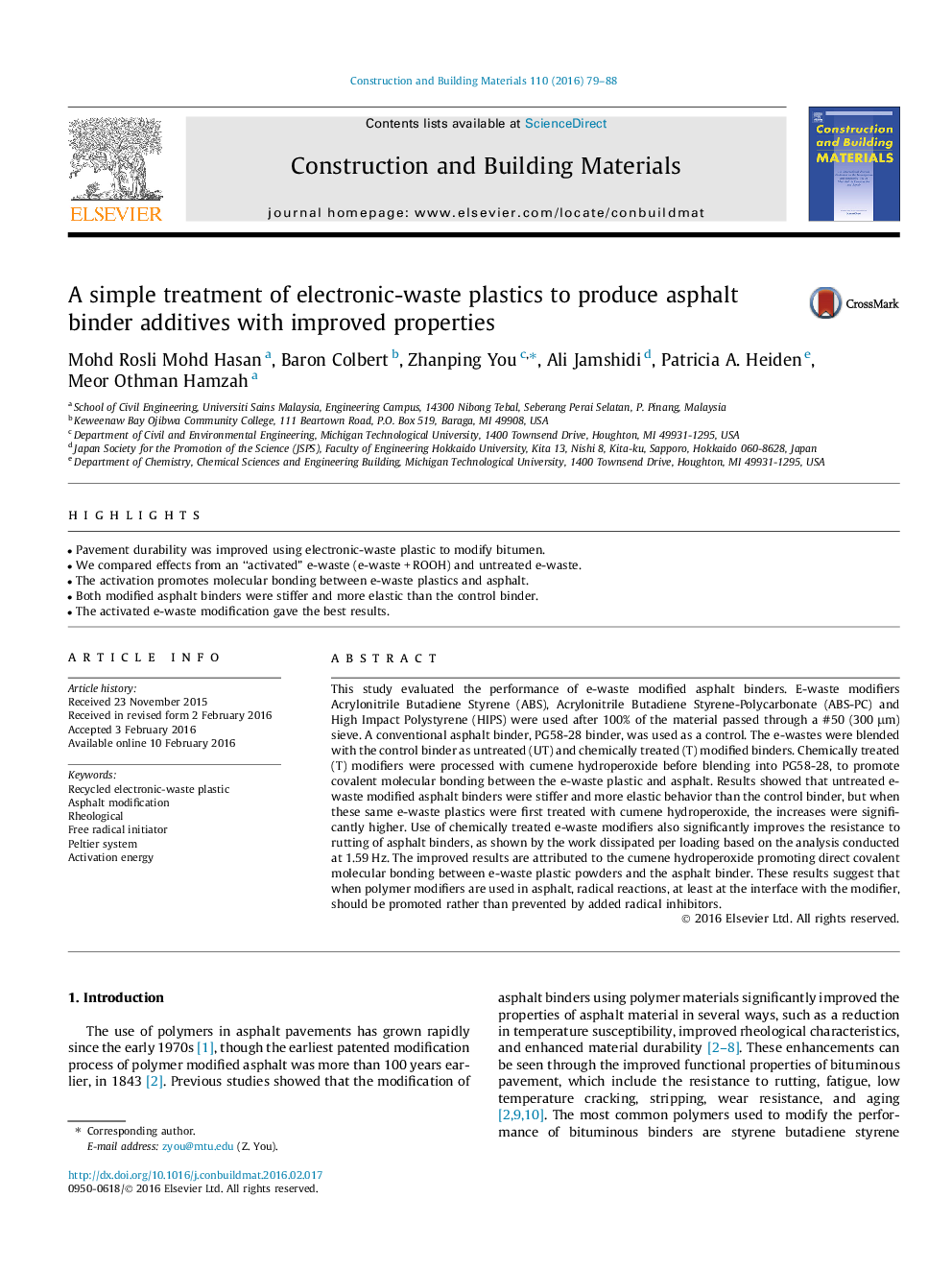| کد مقاله | کد نشریه | سال انتشار | مقاله انگلیسی | نسخه تمام متن |
|---|---|---|---|---|
| 256062 | 503540 | 2016 | 10 صفحه PDF | دانلود رایگان |
• Pavement durability was improved using electronic-waste plastic to modify bitumen.
• We compared effects from an “activated” e-waste (e-waste + ROOH) and untreated e-waste.
• The activation promotes molecular bonding between e-waste plastics and asphalt.
• Both modified asphalt binders were stiffer and more elastic than the control binder.
• The activated e-waste modification gave the best results.
This study evaluated the performance of e-waste modified asphalt binders. E-waste modifiers Acrylonitrile Butadiene Styrene (ABS), Acrylonitrile Butadiene Styrene-Polycarbonate (ABS-PC) and High Impact Polystyrene (HIPS) were used after 100% of the material passed through a #50 (300 μm) sieve. A conventional asphalt binder, PG58-28 binder, was used as a control. The e-wastes were blended with the control binder as untreated (UT) and chemically treated (T) modified binders. Chemically treated (T) modifiers were processed with cumene hydroperoxide before blending into PG58-28, to promote covalent molecular bonding between the e-waste plastic and asphalt. Results showed that untreated e-waste modified asphalt binders were stiffer and more elastic behavior than the control binder, but when these same e-waste plastics were first treated with cumene hydroperoxide, the increases were significantly higher. Use of chemically treated e-waste modifiers also significantly improves the resistance to rutting of asphalt binders, as shown by the work dissipated per loading based on the analysis conducted at 1.59 Hz. The improved results are attributed to the cumene hydroperoxide promoting direct covalent molecular bonding between e-waste plastic powders and the asphalt binder. These results suggest that when polymer modifiers are used in asphalt, radical reactions, at least at the interface with the modifier, should be promoted rather than prevented by added radical inhibitors.
Journal: Construction and Building Materials - Volume 110, 1 May 2016, Pages 79–88
